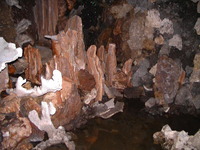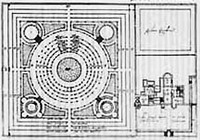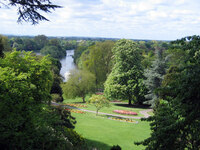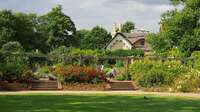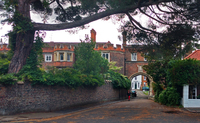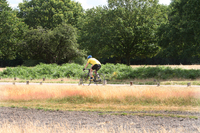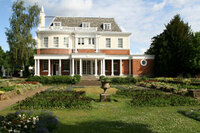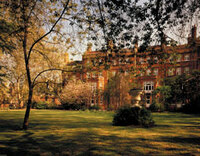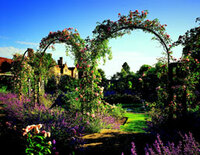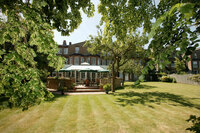- England
- Scotland
- France
- Holland
- Germany
- Italy
- Spain
- Portugal
- USA
- China
- Japan
- India
- Iran
- Advice
- Gardens
- England
- Scotland
- France
- Holland
- Germany
- Italy
- Spain
- Portugal
- USA
- China
- Japan
- India
- Iran
- Advice
- Garden Tours
The gardens of Ham House were restored by the National Trust to a 17th century layout to mark European Architectural Heritage Year (1975). The Trust used a plan by John Slezer and Jan Wyck (c.1671-2) as the basis for restoring the garden. This plan was partly inspired Robert Smythson's plan c1610. Plants which would have been available at the time have been carefully selected and have faithfully recreated the atmosphere of the period. There is now a parterre (with questionable planting) and a 'wilderness' which is not very wild: it is a wilderness in the sense defined in Philip Miller’s Gardener’s dictionary (1735) . Miller wrote that 'The usual Method of contriving Wildernesses is, to divide the whole Compass of Ground, either into Squares' Angles, Circles, or other Figures, … the Walks are commonly made to intersect each other in Angles, which also shews too formal and trite for such Plantations, and are by no means comparable to such Walks as have the Appearance of Meanders or Labyrinths, where the Eye can't discover more than twenty or thirty Yards in Length; and the more these Walks are turned, the greater Pleasure they will afford. These should now and then lead into an open circular Piece of Grass; in the Center of which may be placed either an Obelisk, Statue, or Fountain'.
This rare and atmospheric 17th-century house sits on the banks of the River Thames in Richmond. It is the creation of the tenacious Duchess of Lauderdale and her husband, the Duke, who together transformed Ham into one of the grandest Stuart houses in England.
Ham House is internationally recognised for its superb collection of paintings, furniture and textiles, largely acquired 400 years ago. Some of our unique objects include a rare Chinese teapot, said to have been used by the Duchess herself, and the exotic ivory cabinet. The house is reputed to be one of the most haunted in Britain. Some visitors have reported the ghostly aroma of the sweet Virginia pipe tobacco that the Duke smoked after meals in the dining room. Visit the hands on below stairs room; including the bathroom, complete with a wooden bathtub and bed, illustrates how baths were taken before washing became an everyday event.
Selected rooms in the house are open by guided tour during the winter months, with tickets on a first come first served basis.
Outside, the open and formal restored 17th-century gardens surround the house. It includes a productive kitchen garden containing many heritage crops, the maze-like ‘Wilderness’, complete with summerhouses, and many beautiful spots perfect for a picnic.
The Orangery café set in the kitchen garden serves light lunches and teas. The café is set in one of the first examples of an Orangery, however it was not an ideal building for plants to grow as the windows are small and very little light could reach the orange and lemon trees.
Richmond, London, Greater London, England, TW10 7RS
See Ham House website for details:-
